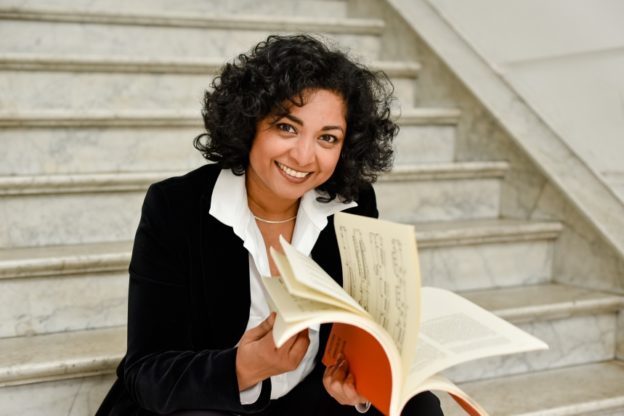Your CD is called Écoutez!, or Listen! in English. When one hears the sounds on the disc, in fact one can’t do anything but listen. The music is unbelievably varied: energetic and dreamy by turns, and always gripping. How do Debussy, Cage and Takemitsu do this? And how do you manage it yourself, in your interpretations?
The masters achieve it through the art of the unexpected. This may be through their treatment of the instruments themselves, the harmony, the individual notes, or the rhythm, while also maintaining a form. None of the three composers have anything to do with disorganised chaos. There is the A-B-A form with a closing sequence (often seen in Debussy’s music), or John Cage’s short, one-movement sonata form in two parts, which is reminiscent of Domenico Scarlatti. There is also an associative element, which heightens the listener’s awareness. There is a sense of the familiar, a chance to remember, alongside a sense of surprise, and curiosity, about the unexpected. For my part, I hope that my listeners will follow me with interest on my own “journey” through the pieces. I am happy if, by doing this, the horizons of their experience expand a little.
In the booklet you write that this CD is your personal declaration of love for the piano. Why is ‘Écoutez!’ so special for you?
I have always loved the piano. Of course! That is why I am a pianist. Écoutez! gives me the most possibilities, to date, to explain why. It’s very clearly about the immense sonic variety of this instrument – all the way to dematerialisation, and this by supposedly the most mechanical of all instruments. All the tracks in Écoutez! put this aspect particularly to the fore; other than in my previous CDs, which are more about the music itself and less about the piano. Through my work on the sonatas and interludes of John Cage, particularly in the evening, I sometimes fell into a trance, by sole means of the unexpected sounds emanating from this beautiful – also optically so beautiful – instrument. A single note or a sound construction, be it by Debussy or Cage, Mozart or Brahms, can move me to tears or fill me with love. Often I am overwhelmed. I can’t tell you why. Love is like that.
John Cage once said that silence is already sound. Silence, sound and noises are crucial in his Sonatas and Interludes for Prepared Piano. The piano becomes a percussion instrument, a sonic universe. What does one experience when one plays this work?
Personally, it reminds me of my South Indian heritage. The cycle was inspired by Cage’s acquaintance with the Ceylon Tamil philosopher, Ananda K. Coomaraswamy (1877 – 1947). For example, I can hear the mridangam in the Sonata no. 5, both in the colour of the sound, and in the unmistakable closing sequence. Or, I feel as if I have joined a percussion ensemble – sometimes in Bali, where I have listened to gamelan orchestras. I also hear Tibetan prayer bells, or simply peculiar rhythmic formations of all sorts of different sounds, which make me laugh. In any case, it wakes you up, and is incredibly varied!
The works of the Japanese composer Toru Takemitsu fit together wonderfully with Cage and Debussy. In the Japanese musical tradition, there is little message in the tones that are played; the space they create is more important. Noise and sound is connected, style is consciously integrated. Having recording this CD, do you now see sound, silence and noise differently?
Maybe, it was exactly the other way round. Because I, as an artist, am consciously sensitive in my perceptions – be that within a pitch, a moment of musical tension, or in everyday human life, in the stillness of being alone or when confronted with noise – my antennae were probably focused on this aspect of Debussy’s music. So I was happy to be able to devote myself, in the works of Takemitsu and Cage, to this essential aspect of music.
Pizzicato review: https://www.pizzicato.lu/das-sollte-man-tun/

























